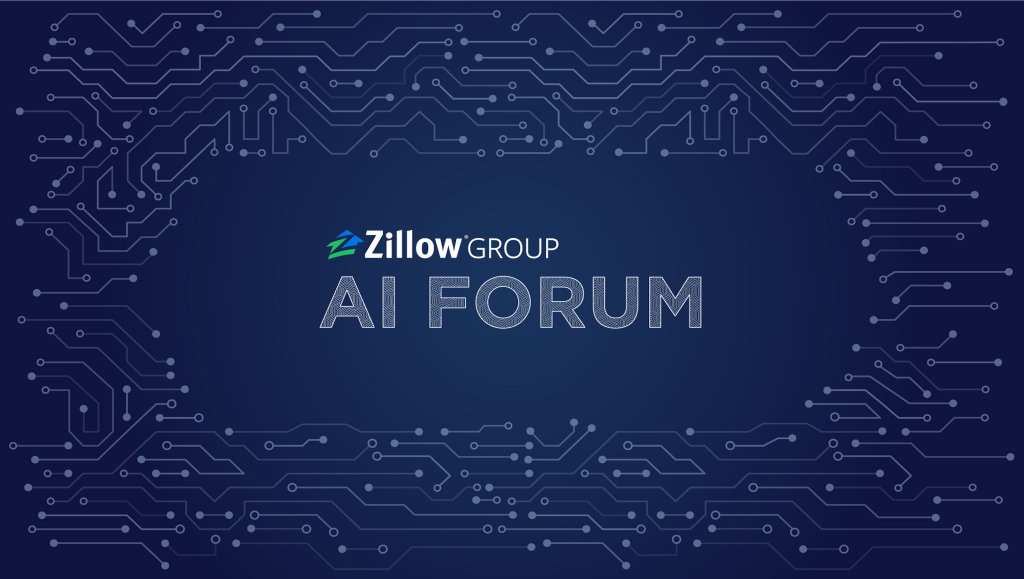
When I joined Zillow in July 2017, our Artificial Intelligence (AI) organization was about 60, and today we’re grown to more than 100 scientists, engineers, and project managers (we’re hiring!). We love to keep up to date with the exciting new developments in our field, and with that in mind, on Sept 21, 2018, Zillow Group hosted our first AI Forum at the Nasdaq Entrepreneurial Center in San Francisco, California. The forum brought together AI leaders and practitioners from industry and academia to share how we’re implementing AI technologies and our ideas about the future. Speakers from Zillow, Uber, HouseSigma, AirBnB, Trulia, Netflix, Reconstruct, Home Depot, Automat, Amazon, AI2, and Kaggle shared applications in presentations and ideas in panel discussions. Topics included marketing measurement and prediction, job titles in AI organizations, user-interface personalization, 3D scene reconstruction and academic collaborations with industry, semantic search, chatbots for relationship personalization, AWS services, and the future of AI. In this post, I’ll share an overview of a few of the talks. Today we’re also sharing full videos of all the talks here.
AI for Ad Optimization
Here at Zillow, I lead a team in our AI organization focused on personalizing and optimizing our paid marketing (we’re hiring!), which is why I was super exciting to hear Mario Vinasco (Marketing Analytics, Uber) talk about communication frequency optimization and channel efficiency measurement, and to hear from Hayden Liu (Chief Data Scientist, HouseSigma), on click through rate (CTR) prediction using deep learning techniques.
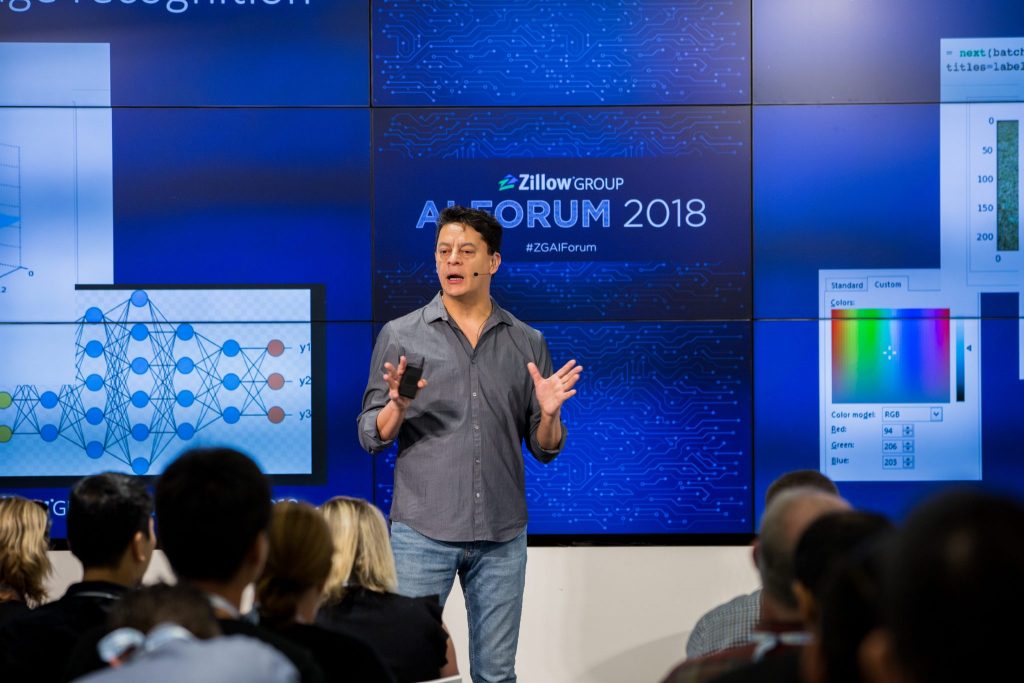
Mario Vinasco (Marketing Analytics, Uber), spoke about marketing frequency and measurement.
I had two key takeaways from this talk. First was that in paid marketing, we often deal with the trade-off of accurate targeting vs. reach; we usually pay more per person to target a smaller group. Traditionally, this leads marketers to optimize for reach rather than targeting. Mario argued that we can achieve greater efficiency when we more accurately target a smaller group, even if we have to pay more for users. This is one key value that machine learning (ML) and AI add to marketing; with AI, we can efficiently and more accurately target users with the right message at the right time.
My second key takeaway was how Uber uses two linear models to develop an email communication strategy, one predicting email open rate for a given users, and another predicting email unsubscribe rate. Combining these two models, Uber identified groups of user that should receive reduced email communication, and groups for which email communication could likely be increased.
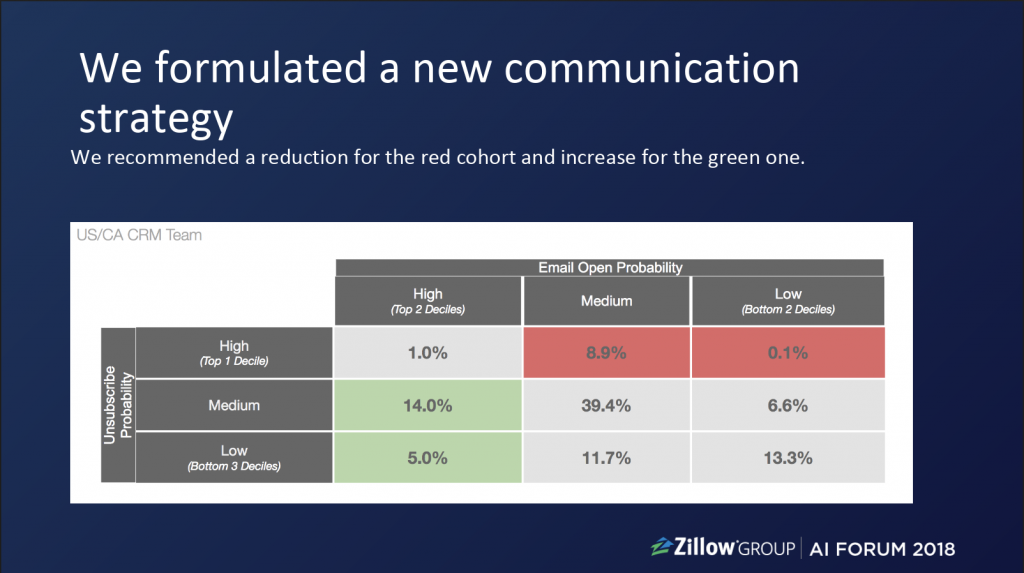
Uber’s ML guided email communication strategy increases frequency for users likely to open and unlikely to unsubscribe (shown in green), and decreases frequency for users likely to unsubscribe and unlikely to open (shown in red).
Like many of my colleagues, I’m super excited about the potential for deep learning (DL) techniques in advertising, which is why I was so excited to hear Hayden Liu’s overview of DL models for CTR prediction. Hayden shared 4 DL network architectures for predicting CTR in online ads, concluding that Deep and Cross Networks produced the best results in his tests.
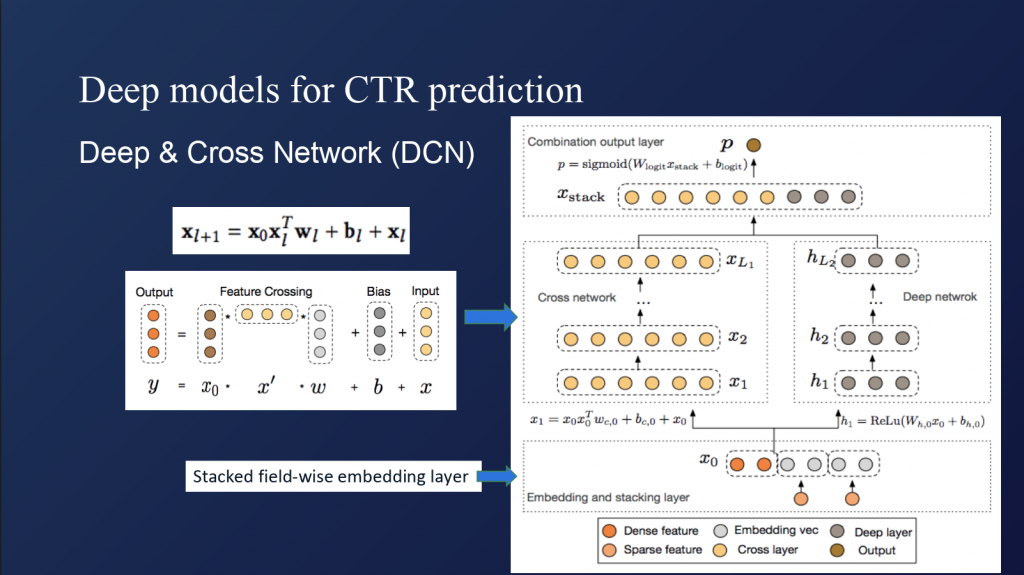
The Deep & Cross Network (DCN) architecture performed best in the speaker’s testing.
AI for UI Personalization
Netflix’s personalized title browser is a pervasive example of the power of AI to transform user interfaces. Speakers Jaya Kawale (Sr. Research Scientist), and Fernando Amat (Sr. Research Engineer) shared how almost all of the elements we see on the title browser are customized using algorithms. The title that is shown in the billboard, the categories of movies shown, the titles themselves, and the images used for each title can all be personalized for each user, based on viewing history and other features.
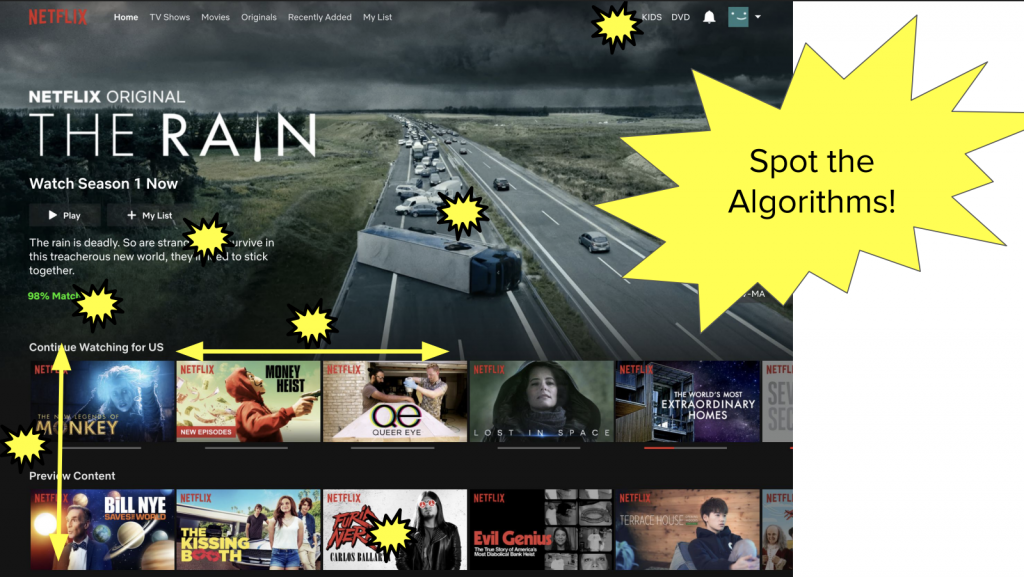
Most elements in Netflix’s title browser are personalized with algorithms.
Jaya and Fernando spoke in depth about how Bandit algorithms are used to personalize image selection for every title in the browser, and also for selecting the title to be shown in the billboard (the large area above the lists of titles). Jaya noted that billboard selection algorithms use an incrementality based policy that predicts both the likelihood that a user will play the given title and also how that likelihood will change if the title is displayed in the billboard.
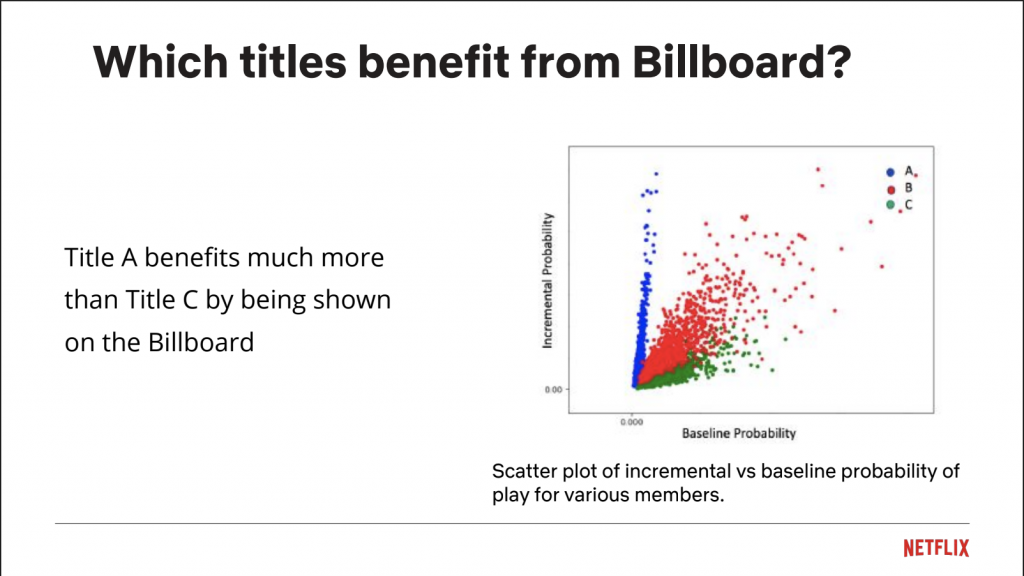
Netflix selects titles for the billboard that benefit most from that prominent placement.
This policy then optimizes for using this high visibility real estate in a very efficient way, ideally promoting title that users are more likely to watch because they have been promoted.
AI for 3D (and academic collaborations)
Derek Hoiem (CTO Reconstruct, associate professor of Computer Science at University of Illinois at Urbana-Champaign) shared two approaches to 3D scene reconstruction, one based on traditional geometric techniques using multiple images, and a machine learning technique that enables scene reconstruction from a single image.
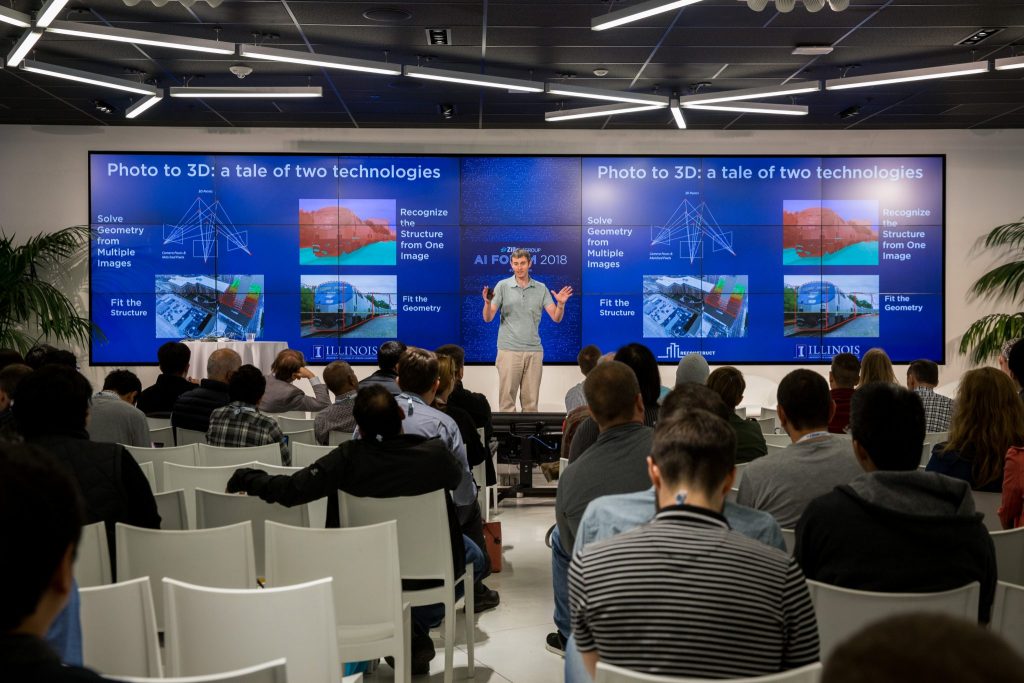
Dr. Hoiem shared details on two different techniques for 3D scene reconstruction.
Dr. Hoiem shared how he’s built a company implementing geometric techniques with drone captured images to measure construction progress of skyscrapers, and how his research on machine learning techniques led to a collaboration with Zillow. In collaboration with Zillow, Dr. Hoiem’s PhD student, and Zillow intern, Chuhang Zou, published LayoutNet: Reconstructing the 3D Room Layout from a Single RGB Image. Zillow’s 3D team is applying this research with our iPhone 3D Capture App, which allows real estate agents to capture panoramas, which are then reconstructed into 3D scenes (more on our tech blog).
The Future of AI
The forum wrapped up with a conversation on the future of AI with panelists Anthony Gloodbloom (CEO, Kaggle), Oren Etzioni (CEO, AI2), Stan Humphries (Chief Analytics Officer, Zillow Group), and Svenja Gudell (Chief Economist, Zillow Group). The panelists shared their ideas about how AI will change incentives in our society and how we might respond to collectively adjust. Two ideas really stood out for me: first, how AI might lead us to change our preferences for real estate, and second, the opportunity to create programs for guided job transition and accessible vocational education.
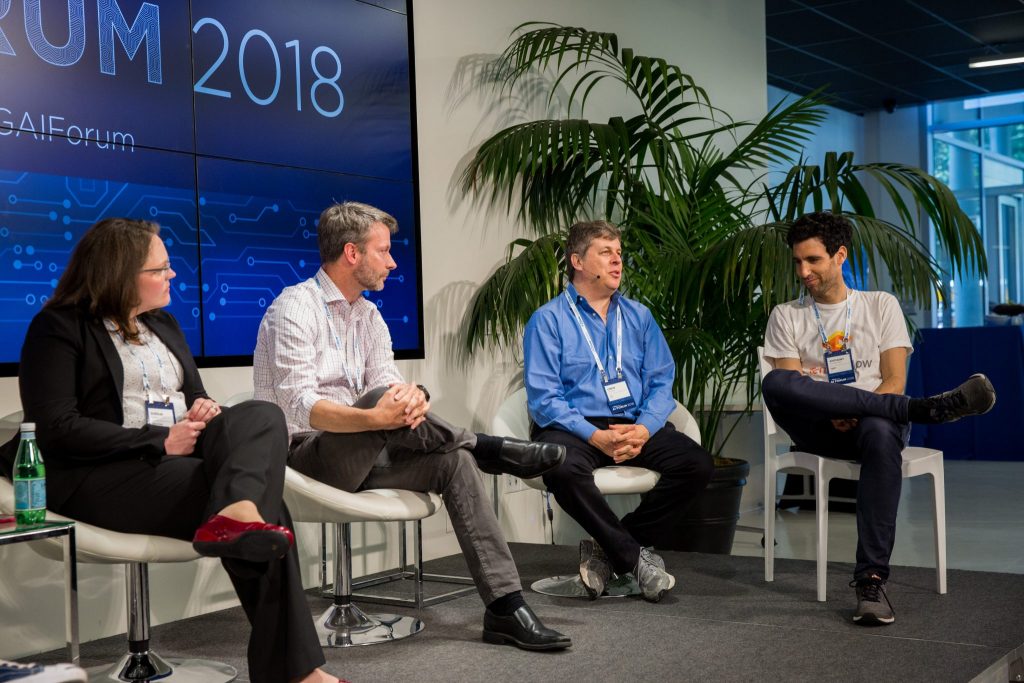
Panelists shared their thoughts on the future of AI.
Imagine a world in which self-driving cars are ubiquitous. Our panelists asked: How will this change our cities? How will this change our preferences for real estate? In this world, parking in cities could become obsolete, opening up as much as 25% of our downtown cores (currently reserved for parking) as additional real estate for residential development. If urban density continues to increase, and self-driving cars plus other new transportation technologies transform commuting such that we can work, meet, and leisure during our travel to and from cities, will there be another mass-migration to the suburbs?
All of the panelists expressed concerns about the potential for AI to change the job market. In an environment in which the job market continues to change at an increasing pace, we will need to adapt our job training solutions such that opportunities are available to participate in newly created jobs with unique and changing requirements. As a start, at Zillow we’re piloting a program to help our employees develop skills in technology and transition to engineering roles (read more here).